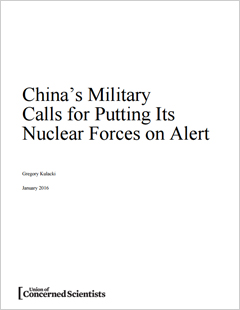In contrast with the United States, which keeps hundreds of nuclear weapons on hair-trigger alert, China’s longstanding approach to nuclear deterrence is premised on “survivability”—the idea that some fraction of their 250 or so nuclear warheads could survive a nuclear first strike and retaliate afterwards. Since the strategy doesn’t require rapid launch, China’s warheads aren’t currently attached to missiles or bombs, and instead are hidden away in tunnels and military installations.
But this relatively low-risk policy may change. Recent excerpts and quotes from Chinese military sources suggest pressure is building to change China’s nuclear posture away from a focus on survivability, and toward a policy of launch-on-warning and hair-trigger alert. Such a change would dramatically increase the risk of a nuclear exchange or accident—a dangerous shift that the United States could help avert.




